What Do Viruses Have In Common With Cells
They contain many complex organelles. Once inside the cell the virus finds the nucleus where the host cells DNA is located.
Animal Human Viruses Article Viruses Khan Academy
They need one our cells to do that.
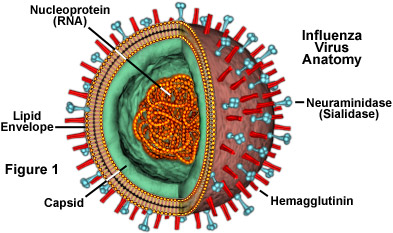
What do viruses have in common with cells. For instance they have nucleic acid genomes based on the same genetic code thats used in your cells and the cells of all living creatures. Endocytosis is a process in which a substance is surrounded by the cell membrane and then released into the cell. Cause viruses are sort of like the pirates of the microbial world arent they.
They are considered the most abundant biological entity on the planet. Chris - Yeah. Inclusion bodies may represent either altered host cell structures or accumulations of viral components.
This makes them the perfect hosts for viruses. The study of viruses is known as virology and people who study viruses are known as virologists. Viruses are tiny infectious agents that rely on living cells to multiply.
Viruses are living organisms that cannot replicate without a host cell. Prokaryotic cells may have photosynthetic pigments such as is found in cyanobacteria blue bacteria. They cant reproduce by themselves they need a host cell.
They have to hijack our cells and turn them into virus factories because theyre so tiny they dont have space inside the virus particle for any of the machinery that you need to make new viruses. How do viruses take over cells. Recently viruses have been declared as living entitiesbased on the large number of protein folds encoded by viral genomes that are shared with the genomes of cells.
They may use an animal plant or bacteria host to survive and reproduce. A virus that is outside of a host cell is. The vast majority of viruses contain only one type of nucleic acid.
Still viruses have some important features in common with cell-based life. As such there is some debate as to whether or not viruses should be considered living organisms. Recently viruses have been declared as living entities based on the large number of protein folds encoded by viral genomes that are shared with the genomes of cells.
Once it infects a susceptible cell however a viruscan direct the cell machinery to produce more viruses. For example viruses cause AIDS Acquired immune deficiency syndrome influenza flu chicken pox and the common cold. DNA or RNA but not both.
Cocci round baccilli rods and spirilla or spirochetes helical cells. Prokaryotic cells come in multiple shapes. Omer - Yes.
Most viruses have either RNAor DNAas The nucleic acidmay be single- or double-stranded. Viruses infect and live inside the cells of living organisms. Viruses cause two types of infections.
Viruses are just genetic material DNA in a protein shell. What do viruses have in common with your bodys cells. For example viruses that infect eukaryotes may get taken into a cell through endocytosis.
They are surrounded by capsids. Their genetic material is surrounded by a nucleus. Cells manufacture proteins replicate DNA and store resources.
When viruses infect the cells of their host they may cause disease. Infecting virus are called cytopathic effects CPE. Diseases caused by viruses.
They contain DNA or RNA. A virusis a small parasite that cannot reproduce by itself. This indicates that viruses likely arose from multiple ancient cells.
Viruses attack a bacterium Image credit. Also like cell-based life viruses have genetic variation and can evolve. This indicates that viruses likely arose from multiple ancient cells.
The viruses genetic material DNA starts to take over the functions of the cell The host cell bursts open releasing the new viruses The virus injects its genetic material into the cell A virus attaches to the surface of a host cell. A virus must infect some kind of cell. Viruses dock onto the membranes of their host cell human cell or bacteria cells and insert their genetic material into the cell.
Viruses take over the cells of living organisms by injecting them with their genetic. Some prokaryotic cells have external whip-like flagella for locomotion or hair like pili for adhesion. Some hosts are tricked into recognizing the virus as a food particle yech.
Common examples are rounding of the infected cell fusion with adjacent cells to form a syncytia polykaryocytes and the appearance of nuclear or cytoplasmic inclusion bodies.
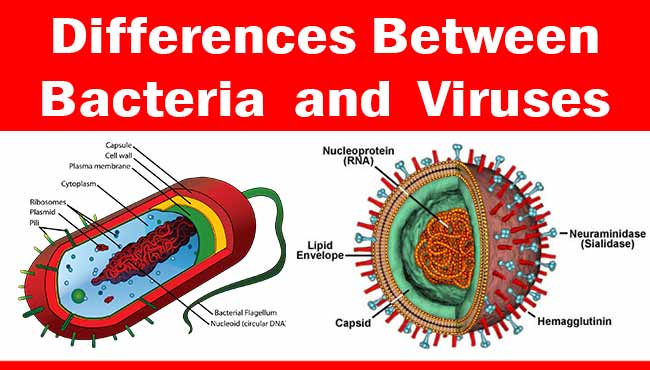
Differences Between Bacteria And Viruses

8 Introduction To Viruses Biology Libretexts

Virus Pathology Dictionary Mypathologyreport Ca
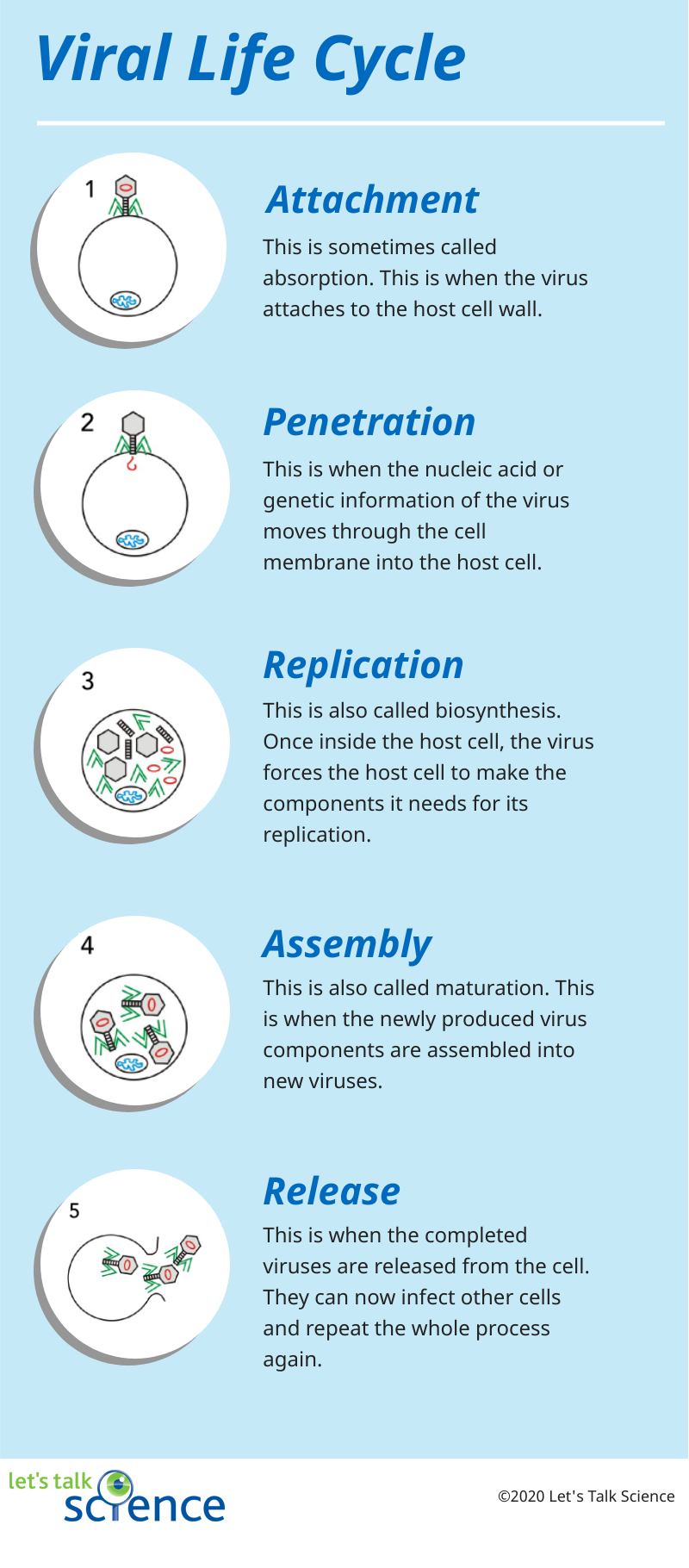
Introduction To Viruses Let S Talk Science

Molecular Expressions Cell Biology The Influenza Flu Virus
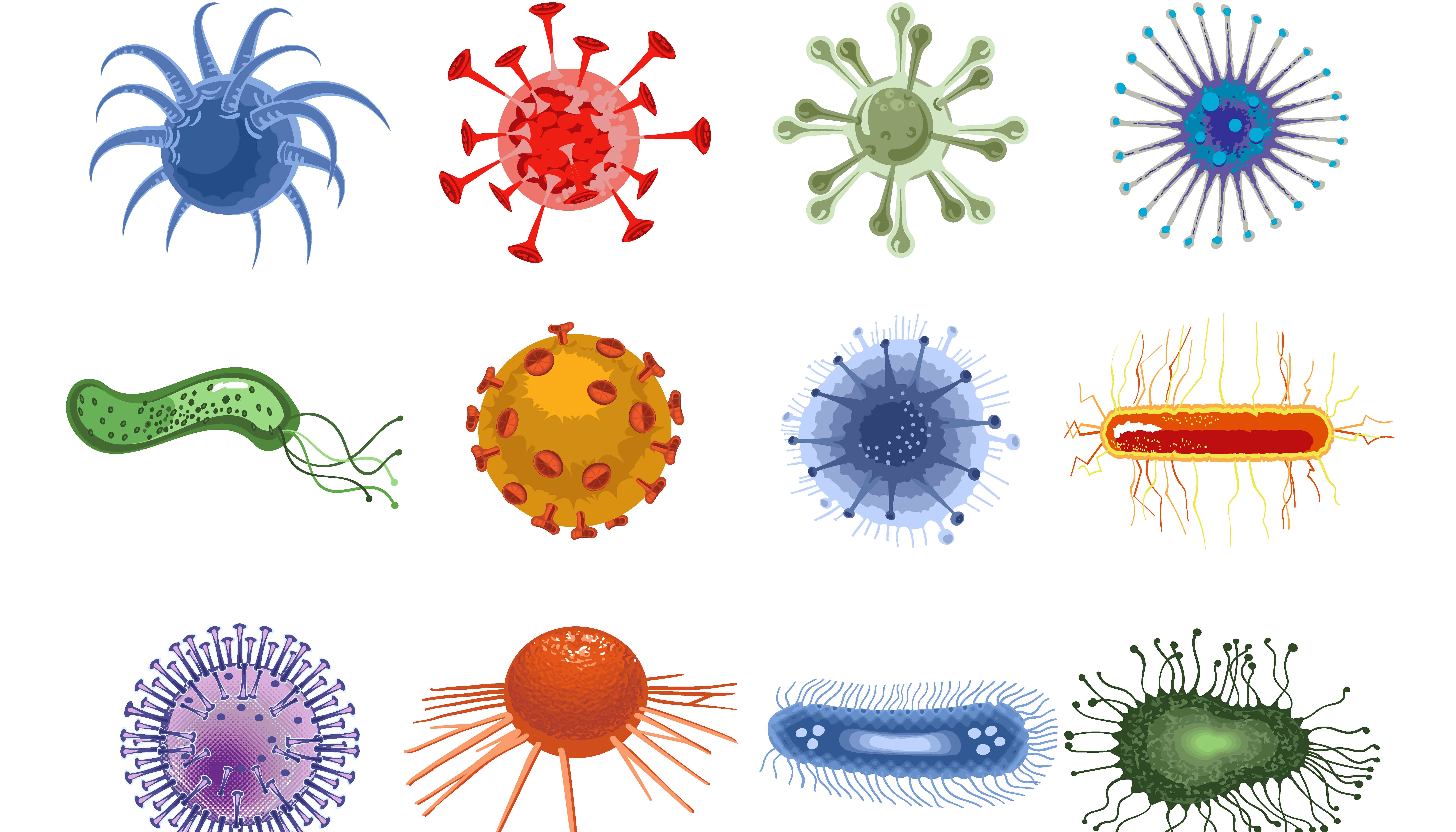
What S The Difference Between Bacteria And Viruses Institute For Molecular Bioscience University Of Queensland
12 1 Viruses Concepts Of Biology 1st Canadian Edition
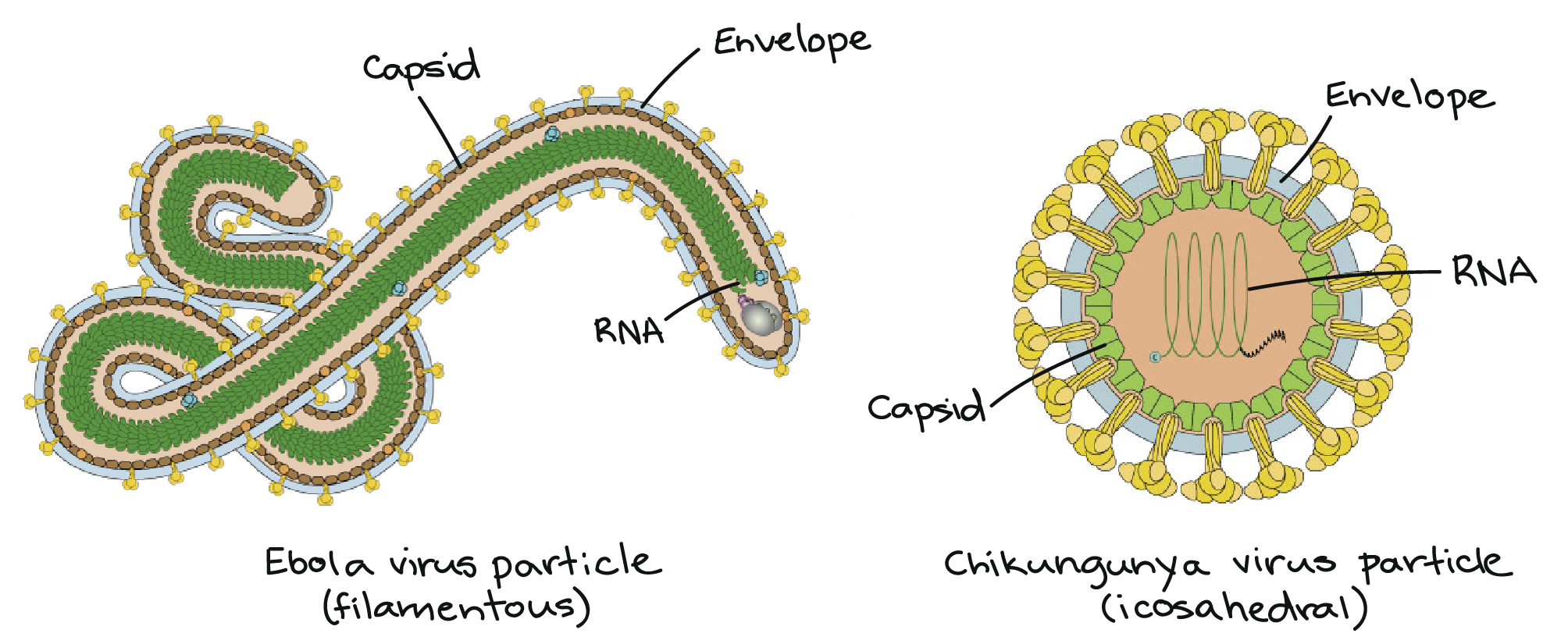
Animal Human Viruses Article Viruses Khan Academy

Virus Infections And Hosts Biology For Majors Ii
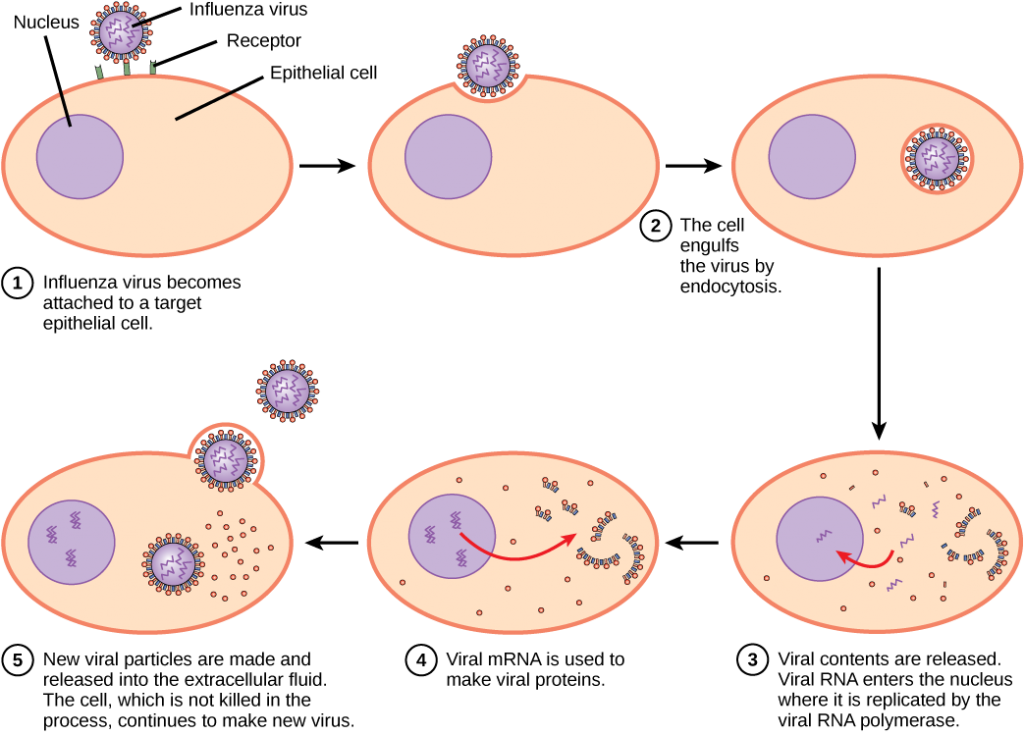
12 1 Viruses Concepts Of Biology 1st Canadian Edition

Virus Pathology Dictionary Mypathologyreport Ca
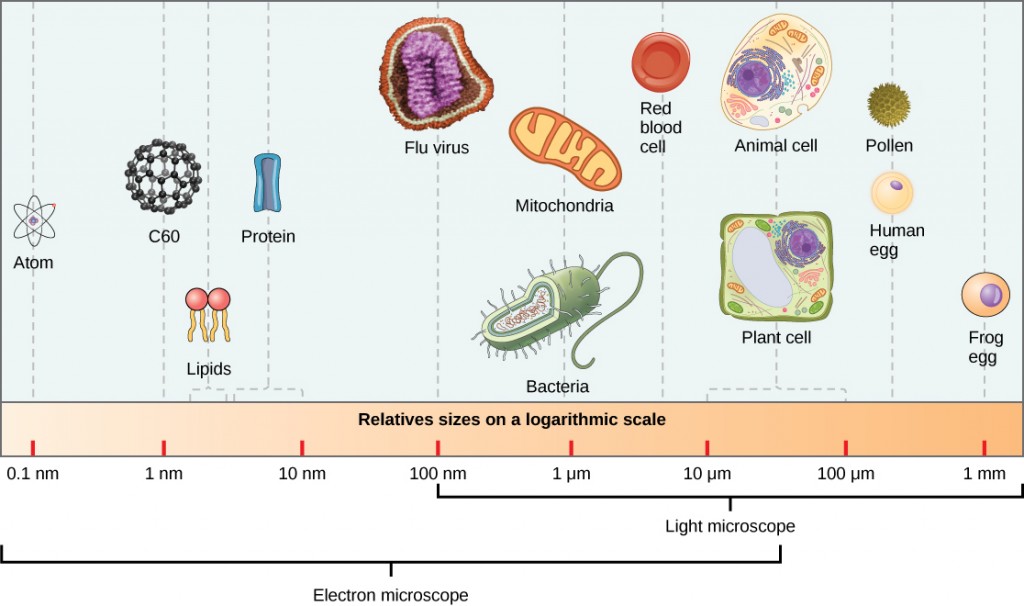
12 1 Viruses Concepts Of Biology 1st Canadian Edition

Virus Infections And Hosts Boundless Biology

Comparing Cells To Viruses Genetic Material Reproduction Video Lesson Transcript Study Com
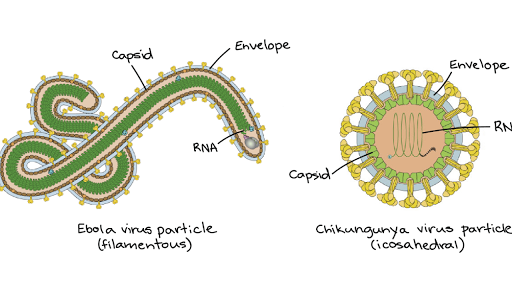





Post a Comment for "What Do Viruses Have In Common With Cells"